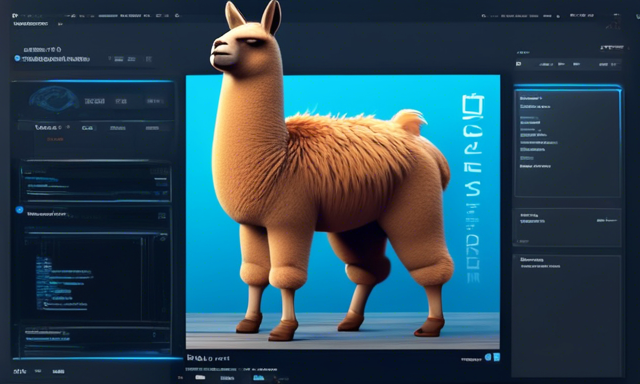Optimizing LLM Performance: A Collaboration Between NVIDIA and Meta
In a groundbreaking development for large language models (LLMs), NVIDIA and Meta have unveiled a cutting-edge framework that incorporates Llama 3.1 and NVIDIA NeMo Retriever NIMs. This innovative partnership is aimed at enhancing retrieval-augmented generation (RAG) pipelines, ultimately improving LLM performance and decision-making capabilities.
Improving Retrieval-augmented Generation Pipelines
Retrieval-augmented generation (RAG) plays a vital role in ensuring that LLMs do not produce outdated or inaccurate responses. Different retrieval strategies like semantic search and graph retrieval are utilized to enhance document recall for accurate content generation. It is essential to tailor the retrieval pipeline to specific data needs and hyperparameters, as there is no one-size-fits-all approach.
The Role of Agentic Frameworks in Modern RAG Systems
Modern RAG systems are increasingly integrating agentic frameworks to handle reasoning, decision-making, and reflection on retrieved data. An agentic system enables LLMs to engage in problem-solving, planning, and execution using a set of tools, leading to more effective content generation.
Meta’s Llama 3.1 and NVIDIA NeMo Retriever NIMs
Meta’s Llama 3.1 models, ranging from 8 billion to 405 billion parameters, are well-equipped to handle agentic workloads. These models excel in task decomposition, acting as central planners, and conducting multi-step reasoning while maintaining safety checks at the model and system levels.
NVIDIA has streamlined the deployment of these models with its NeMo Retriever NIM microservices, offering scalable software solutions to tailor RAG pipelines to the unique data requirements of enterprises. These NIMs seamlessly integrate with existing RAG pipelines and are compatible with open-source LLM frameworks like LangChain and LlamaIndex.
Unlocking the Power of LLMs and NIMs
In customizable agentic RAG pipelines, LLMs with function-calling capabilities play a pivotal role in decision-making based on retrieved data, structured output generation, and tool selection. The NeMo Retriever NIMs enhance this process by providing cutting-edge text embedding and reranking functionalities.
Benefits of NVIDIA NeMo Retriever NIMs
- Scalable deployment: Easily scale to meet user demands.
- Flexible integration: Seamlessly integrate into existing workflows and applications.
- Secure processing: Ensure data privacy and maintain robust data protection protocols.
Meta Llama 3.1 Tool Calling Features
Llama 3.1 models offer advanced agentic capabilities, allowing LLMs to plan and select appropriate tools to solve complex problems efficiently. These models support tool calling in the style of OpenAI, streamlining structured outputs without the need for regular expression parsing.
Enhanced RAG Pipelines with Agentic Frameworks
Agentic frameworks elevate RAG pipelines by incorporating layers of decision-making and self-reflection. These frameworks, including self-RAG and corrective RAG, ensure that retrieved data and generated responses are of high quality, aligning with factual information through post-generation verification.
Structure and Functionality of Architecture and Node Specifications
Advanced frameworks like LangGraph enable developers to categorize LLM application logic into nodes and edges, providing precise control over agentic decision-making processes. Key nodes include:
- Query decomposer: Breaks down complex questions into logical components.
- Router: Determines the source of document retrieval or manages responses.
- Retriever: Implements the core RAG pipeline, combining semantic and keyword search methods.
- Grader: Evaluates the relevance of retrieved passages.
- Hallucination checker: Ensures the factual accuracy of generated content.
Additional tools can be integrated based on specific use cases, such as financial calculators for addressing questions related to trends or growth.
Getting Started with LLMs and NIMs
Developers can access NeMo Retriever embedding and reranking NIM microservices, alongside Llama 3.1 NIMs, on NVIDIA’s AI platform. A comprehensive implementation guide is available in NVIDIA’s developer Jupyter notebook for reference.
Hot Take: Revolutionizing LLM Performance with NVIDIA and Meta
As NVIDIA and Meta collaborate to enhance LLM functionality through Llama 3.1 and NeMo Retriever NIMs, the landscape of large language models is evolving rapidly. This innovative framework not only boosts LLM performance but also augments decision-making capabilities, paving the way for more efficient and accurate content generation in the realm of artificial intelligence.





 By
By


 By
By
 By
By
 By
By